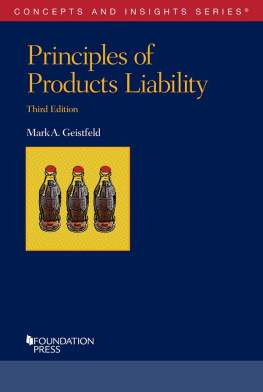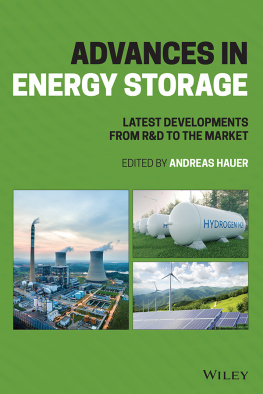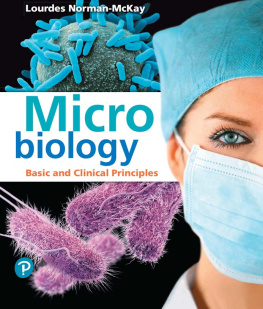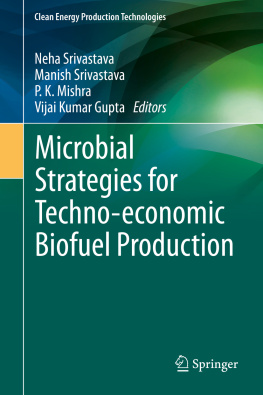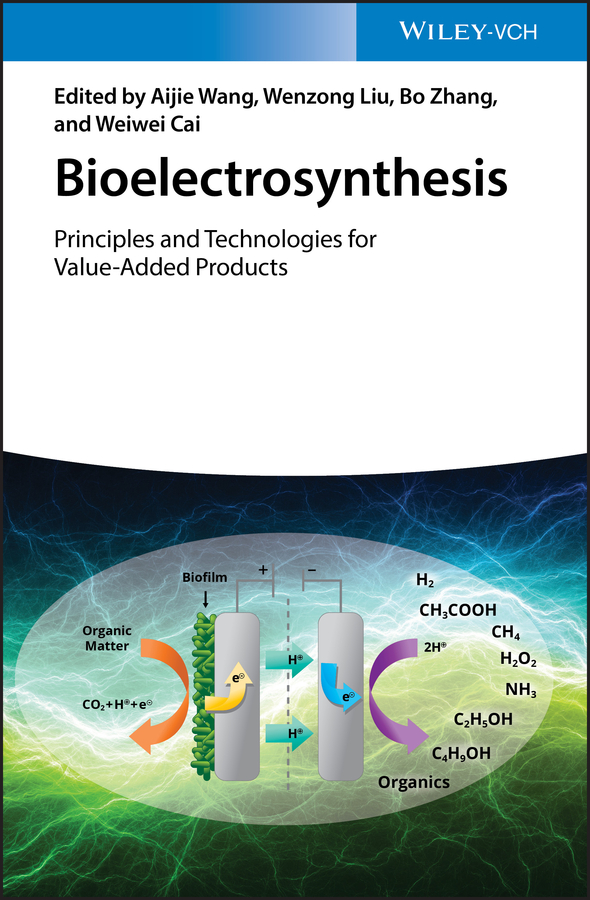
Table of Contents
List of Tables
- Chapter 1
- Chapter 2
- Chapter 3
- Chapter 4
- Chapter 5
- Chapter 6
- Chapter 7
- Chapter 9
- Chapter 13
- Chapter 14
- Chapter 15
List of Illustrations
- Chapter 1
- Chapter 2
- Chapter 3
- Chapter 4
- Chapter 5
- Chapter 6
- Chapter 7
- Chapter 8
- Chapter 9
- Chapter 10
- Chapter 11
- Chapter 12
- Chapter 13
- Chapter 14
- Chapter 15
Guide
Pages
Bioelectrosynthesis
Principles and Technologies for Value-Added Products
Edited by
Aijie Wang
Wenzong Liu
Bo Zhang
Weiwei Cai

Editors
Prof. Aijie Wang
Res. Ctr. for Eco-Environmental Sciences
Key Laboratory of Environmental
Biotechnology
18 Shuangqing Road
Haidian District
100085 Beijing
China
Dr. Wenzong Liu
Res. Ctr. for Eco-Environmental Sciences
Key Laboratory of Environmental
Biotechnology
18 Shuangqing Road
Haidian District
100085 Beijing
China
Dr. Bo Zhang
Res. Ctr. for Eco-Environmental Sciences
Key Laboratory of Environmental
Biotechnology
18 Shuangqing Road
Haidian District
100085 Beijing
China
Dr. Weiwei Cai
Harbin Institute of Technology
State Key Lab. of Urban Water Resources
No 83 Huanghe Road
150090 Harbin
China
All books published by Wiley-VCH are carefully produced. Nevertheless, authors, editors, and publisher do not warrant the information contained in these books, including this book, to be free of errors. Readers are advised to keep in mind that statements, data, illustrations, procedural details or other items may inadvertently be inaccurate.
Library of Congress Card No.:
applied for
British Library Cataloguing-in-Publication Data
A catalogue record for this book is available from the British Library.
Bibliographic information published by the Deutsche Nationalbibliothek
The Deutsche Nationalbibliothek lists this publication in the Deutsche Nationalbibliografie; detailed bibliographic data are available on the Internet at .
2020 Wiley-VCH Verlag GmbH & Co. KGaA, Boschstr. 12, 69469 Weinheim, Germany
All rights reserved (including those of translation into other languages). No part of this book may be reproduced in any form by photoprinting, microfilm, or any other means nor transmitted or translated into a machine language without written permission from the publishers. Registered names, trademarks, etc. used in this book, even when not specifically marked as such, are not to be considered unprotected by law.
Print ISBN: 978-3-527-34378-2
ePDF ISBN: 978-3-527-34384-3
ePub ISBN: 978-3-527-34381-2
oBook ISBN: 978-3-527-34382-9
Cover DesignTata Consulting Services
Preface
Bioelectrosynthesis: Here to Stay!
Many things in science move in waves until they finally land. In the 1960s, with the advent of the fuel cell, it was found that microbial decomposition of organic matter could also be directly linked to power production in microbial fuel cells (MFC) [] production. Unfortunately, for MFCs, even by then also, an alternative technology generating power from biomass had matured: anaerobic digestion. In this process, biogas is produced. Nowadays, anaerobic digesters can deal from small to large scale with complex waste streams, they are very robust, and most importantly they can deal with high loading rates. Top systems now convert over 50kg organics/m3 reactor per day to methane. In terms of electron flow, this implies a current of almost 7000A, going to methane. To my opinion, it will be extremely difficult for MFCs to become an alternative to this, certainly considering the higher complexity of the systems and the presently lower rate.
No, besides the niches for MFC in sensing, the major promise lies in the return of the second wave: bioelectrosynthesis. Although there were some isolated reports on production of methane at cathodes in the late 1990s as well []. It appears that electricity-driven CO2 reduction is here to stay, and there are multiple good reasons for this: society is electrifying, which means that new applications are shifting to the use of electricity as energy source. The electricity is ubiquitously available, can be produced from renewable sources, and when used in the context of production leaves no traces such as salts in the water or the product. The coupling of electricity to CO2 conversion in the so-called carbon capture and utilization is rapidly emerging and MES will find its place within this portfolio.
Already in 2010, we made the point that MES is more than reducing CO2 [].
MES thus encompasses a broad range of production processes, both anodic and cathodic, both starting from CO2 and from substrate organics []. Similar processes emerge to produce methane or upgrade biogas and to produce inorganic products such as hydrogen peroxide or ammonia, many of which are discussed in detail in the following book and which all have the potential to evolve into mature technologies and processes.
The challenges toward this are considerable and are both technological and microbial. When reading this book, grasp the excitement of this great field of science and engineering on the verge of breakthrough. This interface between biology and electrochemistry has already taught us many things about how microorganisms and microbial communities work, and they will continue to amaze us. Think about new, creative uses of bugs and electricity or how electron flow could affect our natural environment.
Enjoy,
Korneel Rabaey
January 2018
Ghent University, Centre for Microbial Ecology and Technology (CMET), Faculty of Bioscience Engineering, Coupure Links 653, 9000 Gent, Belgium
References
- Davis, J.B. and Yarbrough, H.F. (1962). Preliminary experiments on a microbial fuel cell. Science 137 (3530): 615616.
- Hongo, M. and Iwahara, M. (1979). Electrochemical studies on fermentation. 1. Application of electro-energizing method to L-glutamic acid fermentation. Agri. Biol. Chem. 43 (10): 20752081.
- Ghosh, B.K. and Zeikus, J.G. (1987). Electroenergization for control of H2 transformation in acetone butanol fermentations. Abstr. Papers Am. Chem. Soc. 194: 79-MBTD.
- Kim, T.S. and Kim, B.H. (1988). Electron flow shift in Clostridium acetobutylicum by electrochemically introduced reducing equivalent. Biotechnol. Lett. 10 (2): 123128.
- Kim, B.H., Kim, H.J., Hyun, M.S., and Park, D.H. (1999). Direct electrode reaction of Fe(III)-reducing bacterium, Shewanella putrefaciens. J. Microbiol. Biotechnol. 9 (2): 127131.
- Park, D.H., Laivenieks, M., Guettler, M.V. et al. (1999). Microbial utilization of electrically reduced neutral red as the sole electron donor for growth and metabolite production. Appl. Environ. Microbiol. 65 (7): 29122917.
- Bond, D.R., Holmes, D.E., Tender, L.M., and Lovley, D.R. (2002). Electrode-reducing microorganisms that harvest energy from marine sediments. Science 295 (5554): 483485.
- Rabaey, K., Lissens, G., Siciliano, S.D., and Verstraete, W. (2003). A microbial fuel cell capable of converting glucose to electricity at high rate and efficiency. Biotechnol. Lett. 25 (18): 15311535.
Next page


